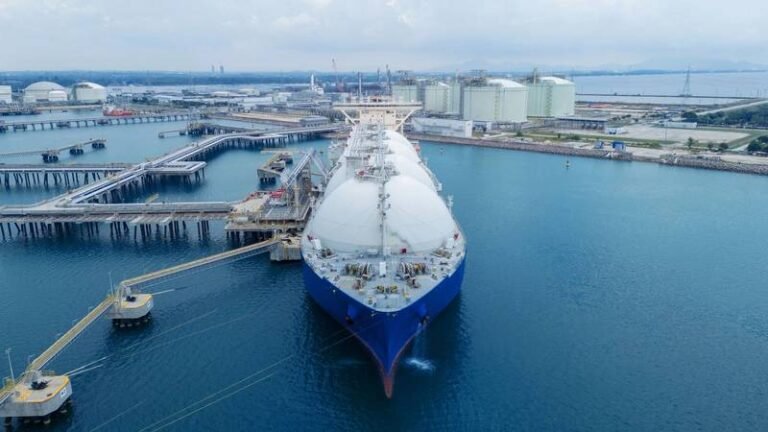The Global LNG Market: A Look at January Imports
In January, the world’s imports of liquefied natural gas (LNG) are set to reach their highest level in a year, driven by increased demand in Europe. This surge in imports reflects the ongoing dynamics of the global energy market and the shifting preferences of major importing regions.
Europe’s Rising Demand
According to data compiled by commodity analysts Kpler, a total of 38.12 million metric tons of LNG is expected to be imported globally in January. This represents a significant increase from December’s volume and marks the highest level since January 2024. Europe, in particular, is expected to see a boost in LNG imports, with volumes reaching 11.82 million tons in January – the highest since April 2023.
Europe’s growing reliance on LNG can be attributed to various factors, including the need to replace pipeline natural gas from Russia and the availability of new LNG supply. However, the outlook for Europe’s LNG imports from Russia remains uncertain, especially in light of geopolitical developments and the return of Donald Trump as U.S. president.
Impact of U.S. LNG Exports
With the United States being the world’s largest exporter of LNG, the commissioning of new LNG plants in 2025 is expected to further solidify its position in the global market. The potential for increased U.S. LNG exports to Europe could have significant implications for the region, both in terms of energy security and geopolitical leverage.
As Europe considers diversifying its energy sources and reducing its reliance on Russian gas, the prospect of higher imports of U.S. LNG presents an opportunity to align economic and strategic objectives. By fostering closer energy ties with the United States, European countries could not only enhance their energy security but also exert pressure on Russia to de-escalate conflicts such as the war in Ukraine.
Market Dynamics in Asia
While Europe sees a surge in LNG imports, Asia’s demand is experiencing a downturn in January. Factors such as a milder winter and high spot prices have contributed to a decline in LNG imports in key Asian markets such as China, Japan, and South Korea.
Despite the drop in Asian LNG imports, global LNG prices remain relatively high, with LNG-AS prices ending at $14.00 per million British thermal units. The continued strength of LNG prices in both Europe and Asia underscores the ongoing competition for LNG cargoes and the importance of supply diversification in mitigating market volatility.
Looking Ahead
As the global LNG market continues to evolve, the interplay between supply, demand, and geopolitical factors will shape the trajectory of LNG trade in the coming months. The dynamics of LNG imports in January offer a glimpse into the complex interconnections of the global energy landscape and highlight the strategic imperatives driving key importing regions.
With Europe’s LNG imports poised to reach record levels and Asia navigating market challenges, the balance of power in the LNG market remains in flux. As stakeholders adapt to changing dynamics and navigate evolving market conditions, the future of LNG trade will be defined by innovation, resilience, and strategic decision-making.
(Article Source: Reuters)

